![]()
![]()
![]()
Use LEFT and RIGHT arrow keys to navigate between flashcards;
Use UP and DOWN arrow keys to flip the card;
H to show hint;
A reads text to speech;
25 Cards in this Set
- Front
- Back
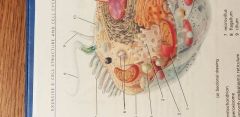
What is the name and function of number 1 |
Mitochondrion: Makes ATP via aerobic cellulae respiration |
|
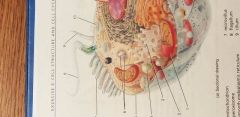
What is the component and function of number 2? |
Peroxisome: Produce hydrogen peroxide;detoxifies harmful substances |
|

What is the component and function of number 3? |
Smooth endoplasmic reticulum: Fatty acid and steroid synthesis;detoxifies toxic substances |
|

What is the component and function of number 4? |
Lysosome:Enzymes digest and recycle worn-out organelles and substances entering the cell |
|
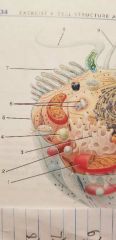
What is the component and function of number 5? |
Plasma membrane:Controls movement of substances into and out of the cell |
|
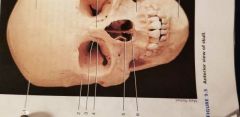
What is the component and function of number 4 |
Lacrimal bone |
|
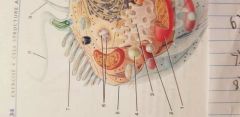
Name and function of number 6 |
Centrioles:form mitotic spindle;needed to form cilia and flagella |
|
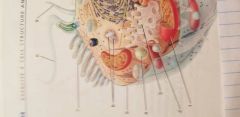
Name and function of number 7 |
Microvillus:folds of the plasma membrane that increase the surface area of the cell to increase absorbtion or secretion |
|
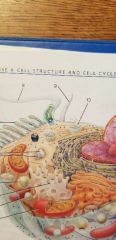
Name and function of number 8 |
Flagellum:Long cell projection;whip like motion moves sperm |
|
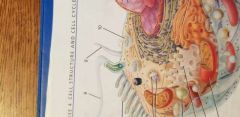
Name and function of number 9 |
Cilia: Abundant, hair like cell projections that move fluids and particles along the cell surface |
|

Name and function of number 10 |
Secretory vesicles:Secrete substances outside the cell by exocytosis |
|
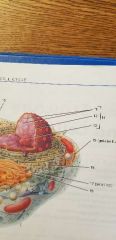
Name and function of number 11 |
Chromatin:Long thin strands within the nucleus. Each strand is composed of one DNA molecule and associated proteins |
|
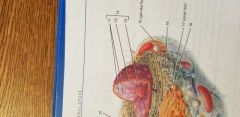
Name and function of number 12 |
Nuclear membrane |
|
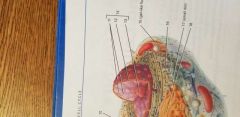
Name and function of number 13 |
Nucleolus:Assembly site for ribosomes |
|

Name and function of number 15 |
Cytosol:Fluid portion of cytoplasm that surrounds organelles |
|

Name and function of number 16 |
Rough endoplasmic reticulum:Processes and transports proteins made at attached ribosomes;synthesizes phospholipids |
|
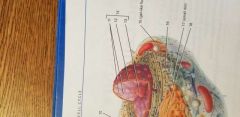
Name and function of number 17 |
Ribosome:Site of protein synthesis |
|
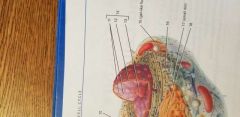
Name and function of number 18 |
Golgi complex:Receives and modifies protein from RER;sorts and transports them |
|
|
What is the 3 main structures of a cell |
Plasma membrane Nucleus Cytoplasm |
|
|
What is Mitosis |
Nuclear division which include 4 phases: Prophase, metaphase, anaphase and telephase |
|
|
Explain prophase |
Chromosomes condense and spindle fibers begin to form |
|
|
Explain Metaphase |
Chromosomes align along spindle equator |
|
|
Explain Anaphase |
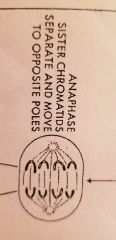
Sister chromatids seperate and move to opposite poles |
|
|
Explain Telophase |
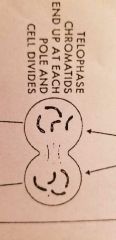
Chromatids end up at each pole and cell divides |
|
|
Explain the results of mitosis |
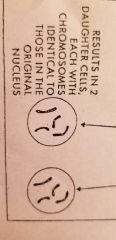
Results in 2 daughter cells, each with chromosomes identical to those in the original nucleus |

